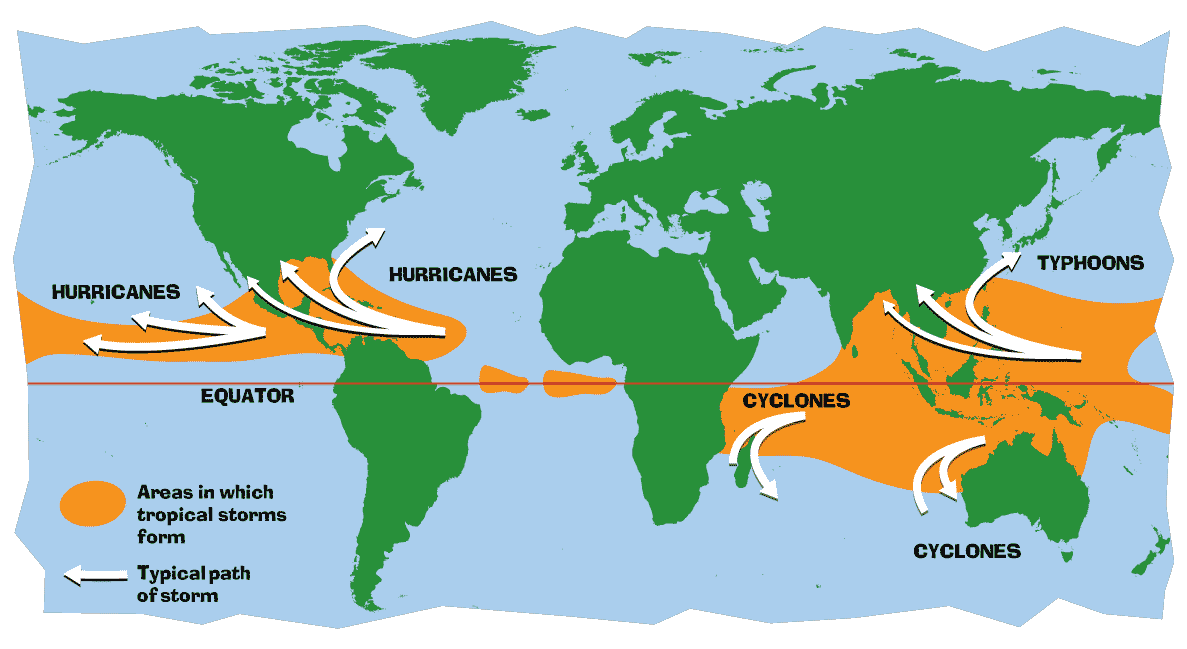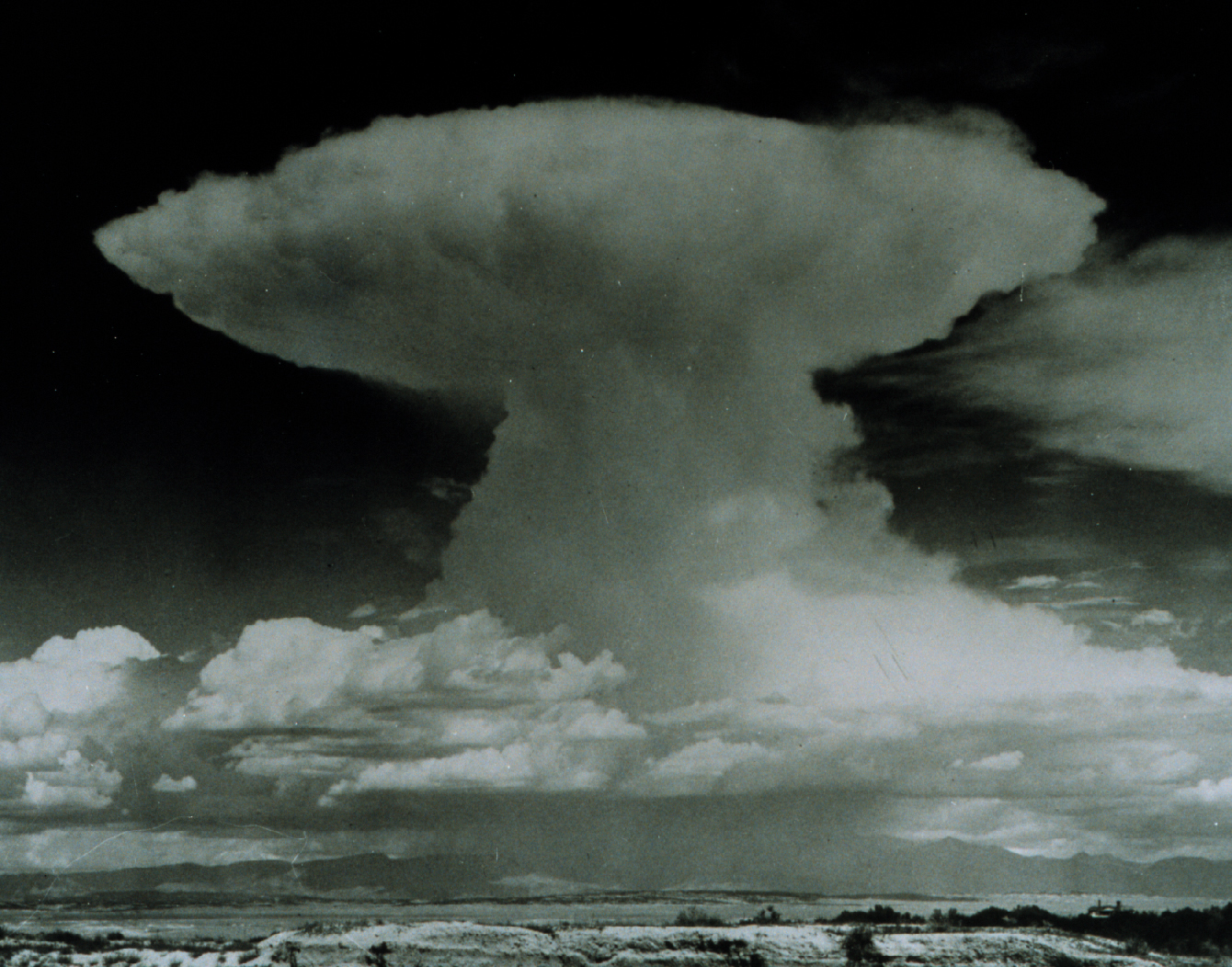Hurricanes are the most awesome, violent storms on Earth. People call these storms by other names, such as typhoons or cyclones, depending on where they occur. The scientific term for all these storms is tropical cyclone. Only tropical cyclones that form over the Atlantic Ocean or eastern Pacific Ocean are called "hurricanes."
Whatever they are called, tropical cyclones all form the same way.

Tropical cyclones are like giant engines that use warm, moist air as fuel. That is why they form only over warm ocean waters near the equator. The warm, moist air over the ocean rises upward from near the surface. Because this air moves up and away from the surface, there is less air left near the surface. Another way to say the same thing is that the warm air rises, causing an area of lower air pressure below.

- 0

There are a number of structural characteristics common to all cyclones. A cyclone is a low-pressure area.[14] A cyclone's center (often known in a mature tropical cyclone as the eye), is the area of lowest atmospheric pressure in the region.[14] Near the center, the pressure gradient force (from the pressure in the center of the cyclone compared to the pressure outside the cyclone) and the force from theCoriolis effect must be in an approximate balance, or the cyclone would collapse on itself as a result of the difference in pressure.[15]
Because of the Coriolis effect, the wind flow around a large cyclone is counterclockwise in the Northern Hemisphere and clockwise in the Southern Hemisphere.[16] In the Northern Hemisphere, the fastest winds relative to the surface of the Earth therefore occur on the eastern side of a northward-moving cyclone and on the northern side of a westward-moving one; the opposite occurs in the Southern Hemisphere.[17] In contrast to low pressure systems, the wind flow around high pressure systems are clockwise (anticyclonic) in the northern hemisphere, and counterclockwise in the southern hemisphere
- 1
- 1




 hurricane
hurricane